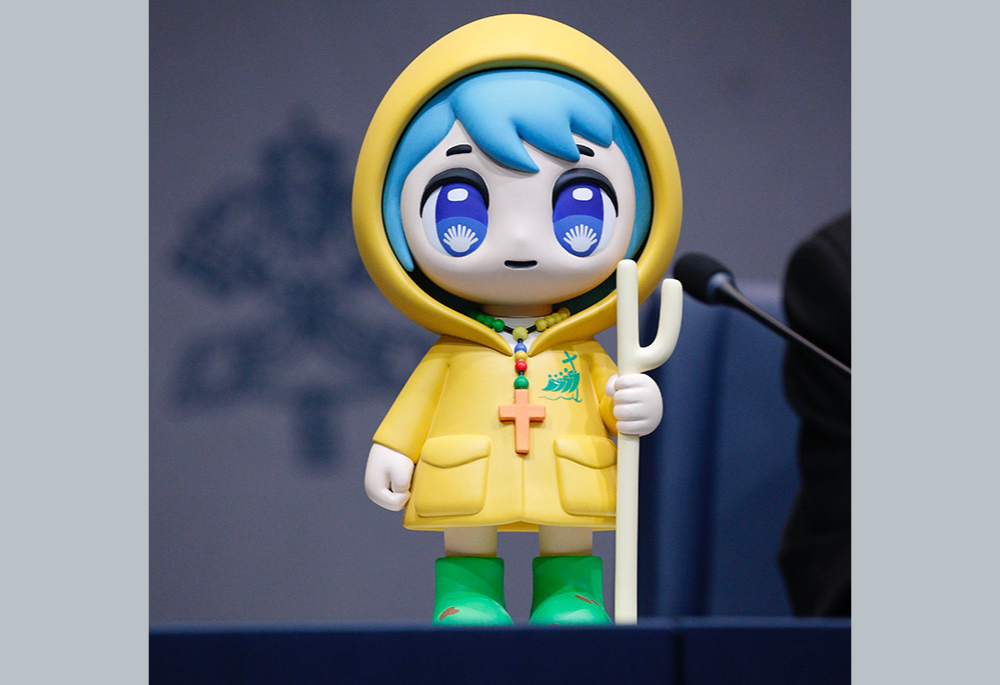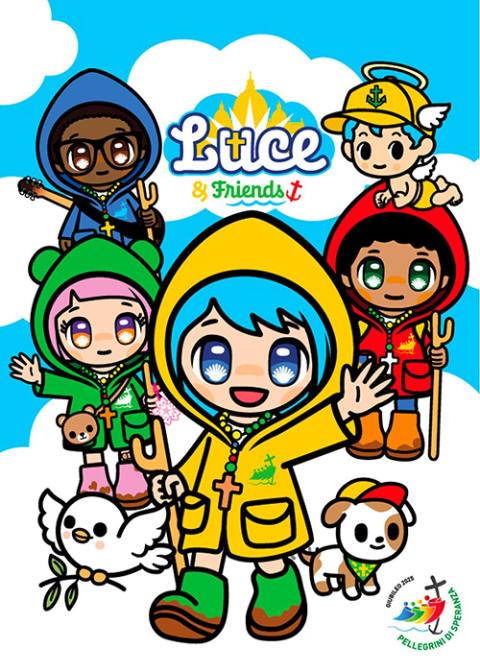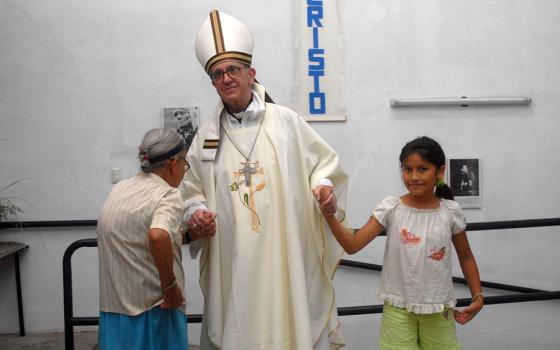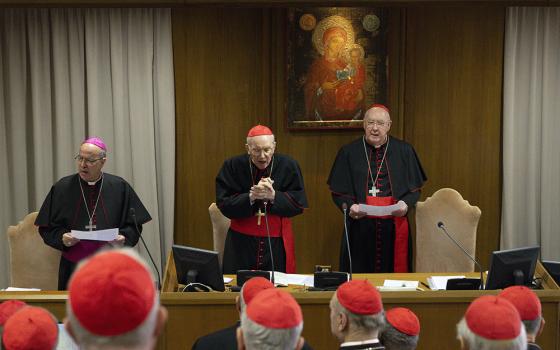
"Luce" (Italian for "Light"), the official mascot for the Holy Year 2025, is seen during a news conference at the Vatican on Oct. 28. (CNS/Justin McLellan)
When Leslie Ponce-Diaz was young, she felt like the Catholic Church was always serious; even Mass was intimidating at times. So upon seeing Luce, the blue-haired, rosary-wearing anime character from the Vatican, was nothing short of surprising. "It's really cute," she chuckled. "My 14-year-old cousins would love this."
On Oct. 28, Archbishop Rino Fisichella of the Dicastery for Evangelization unveiled Luce as the mascot of the 2025 Jubilee Year. Luce, which means "light" in Italian, is a pilgrim clad in a yellow raincoat and mud-stained boots, carrying a walking stick.
Luce sojourns with Santino the dog, (inspired by San Rocco or St. Roch the pilgrim saint), Aura the dove (symbolizing the Holy Spirit) and Iubi the angel. She also has three human companions clad in colorful raincoats: Fe in red, Xin in green and Sky in blue. "Luce & Friends" will appear at Expo 2025 in Osaka, Japan, where the Holy See will also have a pavilion.

Luce, the Vatican's mascot for Holy Year 2025, and her friends are seen in a drawing by the character's creator, Simone Legno. Her friends include dog Santino, the angel Iubi and fellow pilgrims Fe, wearing red; Sky (blue); and Xin, (green). (CNS/Iubilaeum2025, Simone Legno)
"I hope that the pilgrim Luce and her traveling friends, can represent the sentiments that resonate in the hearts of the younger generation," wrote Luce's designer, Simone Legno, in an Instagram post. Legno is the Italian artist and cofounder behind the Japanese-inspired lifestyle brand tokidoki.
Luce has gone viral since being released to the public, dubbed by some as "Catholic Coraline." Websites with fan art have already appeared left and right. Fisichella said that the mascot was inspired by the church's desire "to live even within the pop culture so beloved by our youth."
"I don't know if the Vatican knows how much they're eating," said Daniel Sebastian, a young educator from the Bay Area who found out about Luce on TikTok. ("Eating" is Gen Z slang for doing well.)
If they release plush toys of the different characters, Sebastian says he would like to collect them all. He grew up with plush toys of Jesus and the Virgin Mary, so whimsical efforts by the church to reach young people aren't new to him.
Luce has gone viral since being released to the public, dubbed by some as "Catholic Coraline."
Sebastian has only heard about "Luce & Friends" through the internet, not parishes or youth groups, and is somewhat concerned about how awareness of their existence will be disseminated to young people. He would like official backstories on the character, and even suggested a TV series.
But for Marcela Duque, a computer science major at New York University, Luce is "just a little character" — cute but unnecessary. "Honestly, I don't feel like they have to do anything to get me. I'm here because of my own will."
Advertisement
Born in New York and raised in Colombia, Duque was shaped by her grandmother's faith and heavily involved with her church community in her homeland. She currently volunteers at the Catholic Center on NYU campus. "I don't feel like [the idea of Luce] has much impact on me, but I am not opposed to it," said Duque.
Like many Gen Z Catholics, Ponce-Diaz, who is studying architecture at Harvard, feels strongly about the call to care for immigrants. She hopes that as a pilgrim, Luce might offer opportunities for dialogue about journeying. "Pilgrims come from all around the world, bringing new perspectives and devotions to the places they step into," similar to immigrants, she points out.
Gen Z Catholics like Ponce-Diaz, Sebastian and Duque feel that the Vatican is listening to them, and hopes to see that continue. Luce & Friends is just one of many efforts extended, and young people finding their way around the church take notice.






